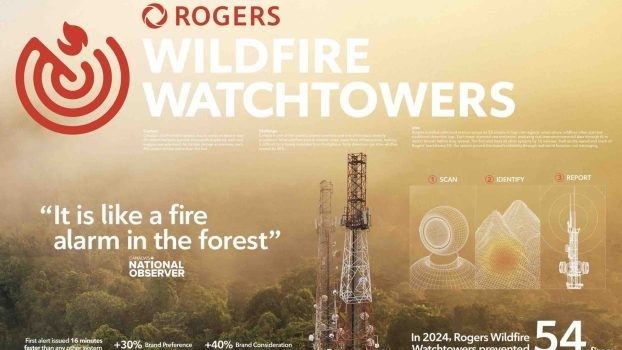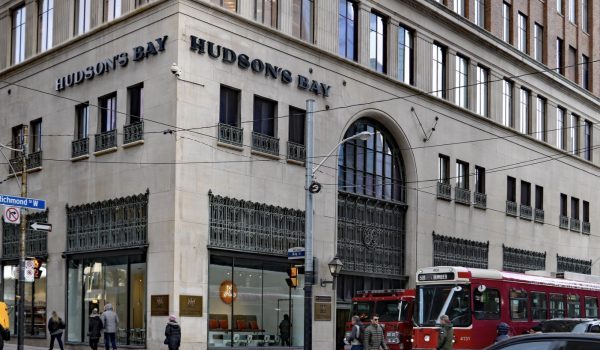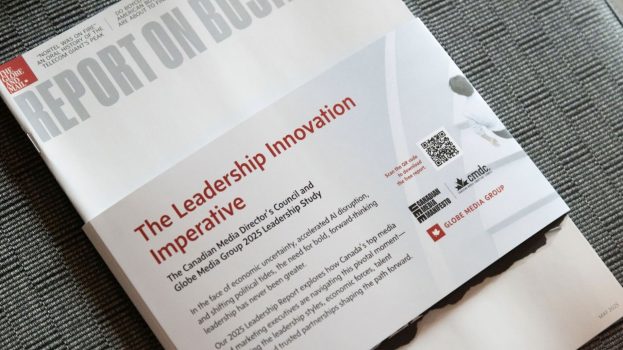Mobile devices are the new billboard, tv spot, print ad, in-store promotion and increasingly, loyalty program, thanks to mobile location-based apps. Proof-positive that these platforms – in conjunction with other sorts of geo-marketing tactics – are gaining notoriety is the recent launch of the Location Based Marketing Association (LBMA).
The Toronto-headquartered group’s founder Asif Khan calls mobile the “connective tissue” that ties everything together. “Location almost provides the Holy Grail that’s been missing – by understanding where somebody is, we now have the complete picture,” says Khan.
Mobile location-based apps, like Foursquare, Gowalla, Loopt, MyTown and Facebook Places mix location-tracking with social media, enabling users to check in to venues and then share their location and recommendations with their social networks. With versions being developed for iPhone, BlackBerry and Android, these platforms have been steadily growing. As of December 2010, Foursquare had accumulated five million users worldwide (Khan estimates between 500,000 and 600,000 Canadian users). MyTown boasts about 3.1 million users and Loopt has over four million.
Marketers have slowly but surely begun to adopt these platforms. For Facebook Places, which arrived in Canada in September and lets users track their friends, discounts are its specialty. The platform enables businesses to reach out to Facebook users via appropriately dubbed Deals, a program that, at press time, had yet to debut north of the border.
“Deals will extend the conversation from the web to stores by creating this socially and geographically relevant offer that engages consumers when and where the consumer wants,” says Jordan Banks, managing director, Facebook Canada.
Offers are broken down into four categories: the individual deal; the friend deal, where companies can offer deals to Facebook friends checking in as groups; loyalty deals, which Banks equates to coffee shop stamp cards; and charity deals where companies give back to the community. Brands partnered with Deals in the U.S. include American Eagle, H&M and JCPenney, which offer discounts, and McDonald’s, which over the holidays gave one dollar per customer to the Ronald McDonald House Charities.
Tying location-based apps to retail environments is what interests Robin Hassan, digital group director at Starcom. She and her team have been exploring the apps with the intent to roll out initiatives for retail-oriented clients and those who focus on consumers on the leading edge.
“Ultimately, for a retailer, when consumers have already made it into their location, they’re more likely to be converting towards a purchase – they’re not generally showing up to walk around,” she says. “The deals in geo-location marketing would be beneficial to help consumers with that extra nudge.” At the end of the day it depends, she says, on making sure that the value is relevant, not bombarding consumers with too much information that’s not going to be compelling.
Many location-based services include an added layer of social game play, providing players with incentives to check in. Hassan cites Stickybits, a location-based app that lets people scan barcodes, post information, reviews, tweets and videos, as well as access details and promos attached to products. HarperCollins Canada involved itself with the app through a campaign allowing Canadians to access promotions around some of its titles – like winning cash or prizes inspired by the books – by uploading tips and content. It launched the effort in November and promoted it through ads in the Globe and Mail and Toronto Star. About 250 people per title scanned codes with an average of 75 uploading content.
“Our goal was to be innovative and experiment with a space we’ve never worked in before to see if there was opportunity for us,” says Cory Beatty, marketing manager, HarperCollins Canada. “We saw a completely different type of consumer come to it because it was a digital application, people that would not normally have come to those books in particular.”
Hassan is interested in how location-based apps can be used as larger loyalty tools. On Foursquare, brands like Starbucks were quick to give discounts to those who claimed mayorship (the user with the most check-ins at any given location). Players can also win specific badges based on their travel habits.
Molson decided to experiment in the space over the summer by developing its “Seize the Summer” app. It gave Molson Canadian drinkers a checklist of activities endorsed by the brand, allowing them to unlock special badges for doing things like wearing shorts, building a dock or visiting the Molson Amphitheatre in Toronto, and then share their achievements via Facebook. Tasks were validated by checking in with the time and place the task was completed, having friends confirm completion or by uploading photos. The app helped Molson grow the number of fans on its Facebook page from 364,000 to 428,000 over the course of the summer, says Forest Kenney, manager of external communications, Molson Coors Canada.
“The thing that [the app] probably did most for us was keep our social channel really full over those 16 weeks,” says Kenney. “This was an opportunity for us to capitalize on [location-based apps], but without making the crux about being in a specific location at a specific time.”
The NHL has successfully tapped into the gaming and tips aspects of Foursquare. It became the first professional sports league with a full-time, dedicated presence on the platform back in October. The launch coincided with the NHL Face-Off, the festival that took place at Yonge-Dundas Square in Toronto to celebrate the start of the NHL season. Hockey fans who attended were able to use their mobile devices to check in to Foursquare, attain badges and access clues pointing them to secret locations to claim prizes. As the 2010-2011 season progresses, fans will be able to check in at select NHL games and events to access info such as memorable moments in NHL history. The campaign was developed with the help of RocketXL.
Currently, the league has 20,483 Foursquare followers. “We’re on Foursquare because it is relevant to our consumers and, whereas NHL fans over-index on digital consumption, we know they are trafficking the most popular social media,” says Michael Dilorenzo, senior director of social media marketing and strategy, NHL. “In the case of geo-social, Foursquare is most certainly on the shortlist. In the future, we’ll continue to use geo-social as we use other social media to shorten the distance between the league and our fans.”
Canadian daily newspaper Metro is another example of a brand leveraging the service. In January 2010 it became the first news organization in the world to team with Foursquare, adding location-specific editorial content. Foursquare users who follow Metro – currently there are close to 25,000 of them – can receive alerts when close to relevant locations, like restaurants Metro has reviewed, and link through to the full review. They can also earn an exclusive Foursquare Metro badge by checking in at places near their pickup locations in the morning. The partnership was promoted with a contest for badge-earners to win an iPhone 3GS, touted in the paper, and through its reader loyalty program, Club Metro, in English Canada.
The paper can also act as a liaison between its advertisers and the platform thanks to multi-platform campaigns across its properties, as well as Foursquare, including pushing out messages to its followers.
The National Post has also joined the Foursquare fray with its own branded Foursquare page (Foursquare.com/nationalpost). It recently asked people in Toronto to check in to a special location created for the 2010 mayoral election, inviting them to tell who they voted for. The goal was to create a mobile exit poll. The Post also incorporated Foursquare into a special TIFF offering for festival-goers called the Foursquare TIFF Insider’s Guide. It allowed the paper’s TIFF experts to share their festival knowledge with readers based on locations around Toronto. Before TIFF, the Post had 4,600 followers; after, the number grew to 15,000 and currently sits at about 35,000.
“When Foursquare and other platforms started gaining popularity everybody talked about how it was a location-based game where you checked in to tell people where you were – it was all about the user,” says Chris Boutet, senior producer for digital media, the National Post. “But now, especially with more news publications getting involved in the space, you’ve started to see the usage change [so that] instead of telling people what you’re doing, you’re checking in to find out what’s going on or find out information about where you are.”
Because the space is so new, it’s lacking adequate means of measuring ROI. That’s starting to change thanks to companies like Vancouver-based Geotoko, which in May launched a platform allowing brands to create location-based promotions and simultaneously publish them on multiple services including Foursquare, Gowalla and Facebook Places. It offers users analytics that include a location heat map for competitive intel, daily check-ins per platform at your location, the number of check-ins per location, the time most check-ins occur, gender, new versus returning visitors, visitors sorted by influence and Facebook fan analytics for integrated Facebook and Foursquare campaigns.
Similarly, New York-based interactive marketing agency Deep Focus recently unveiled Fourscore, a tool to help marketers understand the impact of people’s adoption of location-based services on their business. In beta and only available for Foursquare at press time, the tool supplies measures of how brands’ Foursquare activity compares with that of their competitors. Deep Focus plans on adding more features and metrics, as well as location-based services
to Fourscore.
Another barrier to location-based marketing growth is that other media take precedence when marketers allocate their media spends. That caused Khan to re-examine his definition of location-based advertising, which ultimately led to the LBMA being founded.
“[The definition] moved from only mobile to something that is really about the actual physical place and then understanding it from a brand’s point of view: how do I engage all the forms of media that I’m already spending money on and how do I use mobile to leverage them to reach the consumer in specific ways?” says Khan. “In an ideal world brands would be going to the technology companies and telling them they want to see digital signage integrated with Foursquare check-in and tied to scanning a QR code in a magazine.”
It’s starting to happen in small steps. Charlottetown, PEI-based digital signage company ScreenScape launched a Foursquare widget in September, which it has incorporated into its tech platform. It enables businesses to showcase their Foursquare promotions, recognizing and rewarding Foursquare users on digital displays, using the platform to create real-time, in-venue “hyper-local marketing.”
The Confederation Centre of the Arts in Ottawa is currently using the widget to promote its Foursquare theatre specials. It’s also employing the tech to welcome whoever holds the venue’s Foursquare mayorship via its digital signage every time they check-in.
While integration is on the way, marketers still must deal with all the different tools people are using, creating initiatives that can be incorporated across all these location-based platforms, says Hassan.
In terms of making location-based platforms appealing, another hurdle, Hassan says, is privacy. The solution, she says, is a focus on transparency: Places and the like must always be clear about what they’re communicating about users, while they offer users the opportunity to customize privacy settings.
By their very nature, these platforms ask users to reveal a lot about their day-to-day and may not be conducive to certain kinds of initiatives. The National Post’s exit poll, for example saw more than 320 people check in to the Toronto Election 2010 location, but only 18 shared their votes. Suspecting reluctance on the part of Foursquare users to share that kind of info, the publication also set up an online poll. It received over 2,000 votes and was more accurate in predicting the results of the election.
That said, as Facebook has taught us, it’s surprising what people will share in the pursuit of social status. Combine that with Canada’s love of loyalty program benefits, and you have an area of marketing that is ripe for more brand befriending.























